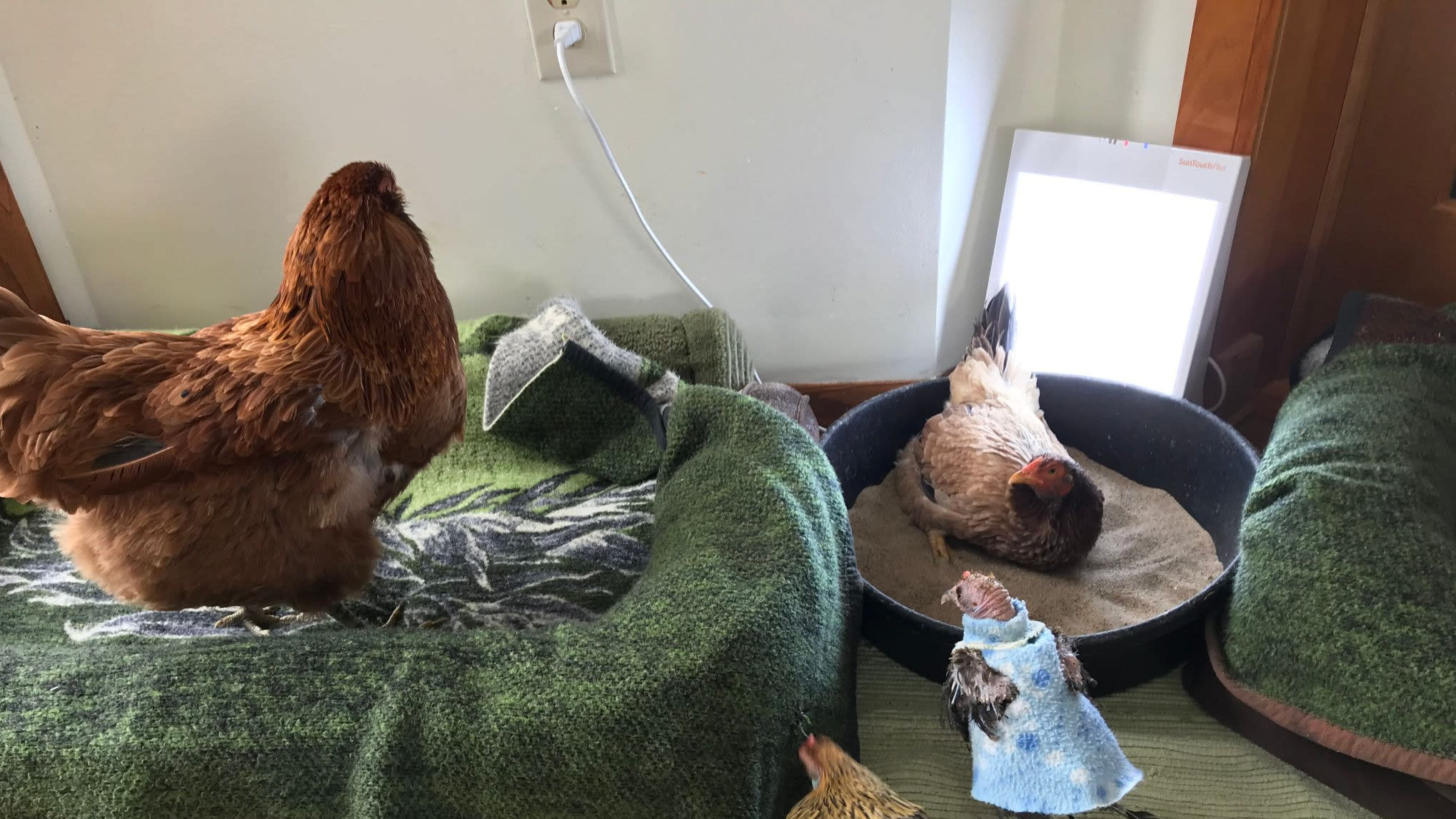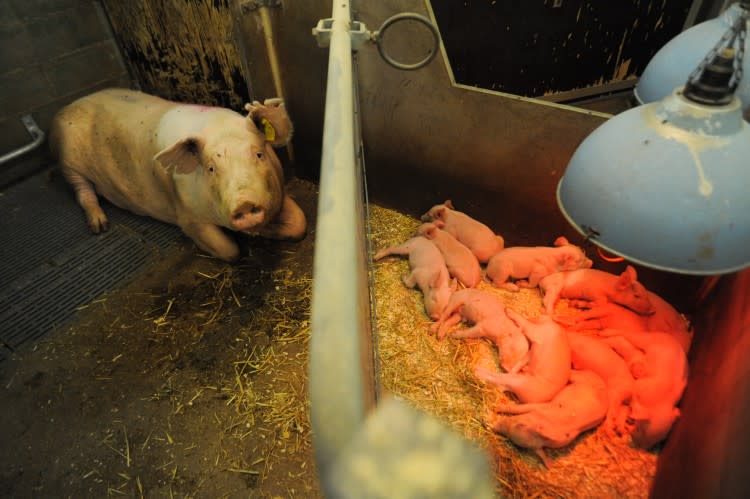




How are children taught to perceive farmed animals? National 4-H Week is an opportunity to consider educational programs that emphasize compassion.

When I started teaching elementary school, I was, like many people, not fond of spiders. But when I left my life in teaching nearly a decade later, you might find me rescuing a spider from a busy sidewalk. It may seem strange, but over time, the children had changed me.
Most of them were, innately, fierce animal advocates. They would rally behind a vulnerable insect trapped in a corner of the classroom, and would not relent until we had brought the small creature outside to safety and freedom. As the years passed, I started to wonder what our world would look like if we would lean into the values our children show up with and foster their radical kindness, even when it conflicts with social norms.
Sadly, some of the most powerful organizations shaping our youth are stifling their inherent concern for life. Agricultural youth organizations like 4-H and Future Farmers of America (FFA) teach children to swallow their compassion, and conform to a culture of exploitation of sentient beings. It’s time to re-examine this popular program and the damage it's inflicting on the social-emotional development of our youth.
What is 4-H?
4-H is the nation’s largest youth development organization, consisting of a network of local chapters. Formed in the early 1900s, 4-H now boasts more than 6 million members ages 5 to 21, and its impact on America’s youth cannot be understated. The organization claims to teach children leadership and agricultural skills, but the animal rearing projects central to this organization impart far more troubling lessons.
Youth in 4-H programs often raise animals, such as pigs, goats, or cows, as “projects” to show at fairs or other local competitions. Soon after the animals go through their first circuit of shows, the children are required to surrender their beloved young companions to auction—and almost certain deaths. 4-H champions animal rearing projects as a way to build life skills, but for some children who develop close bonds with their animals, these projects take an emotional toll that can last a lifetime.
Is 4-H harmful to children?
One troubling example of the 4-H program’s harm to a child (and an animal) has repeatedly made national headlines over the past few years. In 2022, a 9-year-old girl and her family brought her brown-and-white goat to a 4-H auction to be sold and likely slaughtered. Amidst the heartbreak and anguish of relinquishing her beloved companion of six months, the girl sobbed and pleaded to keep the goat, who she named Cedar.
The girl’s mother, Jessica Long, felt sympathy for her child—who had recently lost three of her grandparents. Long quietly removed the goat from the auction and wrote to fair officials to explain her dilemma, offering to cover the cost of the goat and any other expenses resulting from the change in plan.
Fair officials refused Long’s request and threatened that Long could be charged with grand theft, because Cedar had already been sold to another party. Then, fair officials reached out to the local sheriff’s office, which obtained a search warrant. Deputies traveled 500 miles to find and seize Cedar, intended for a county barbecue.
Ultimately, the girl’s parents filed a federal lawsuit over Cedar’s slaughter. (More recently, California officials filed a countersuit against the girl’s mother.) Legal proceedings are ongoing. The dispute has also resulted in proposed legislation, introduced in 2024, that would allow families in California to withdraw their child’s animal from auction before their transportation to slaughter.
But at the heart of the matter, Cedar’s young caretaker is not alone in her anguish. Accounts of heartbroken children relinquishing their animals as part of 4-H or FFA programs are widespread. They circulate in viral videos and news clips each year.
What does 4-H teach children?
For some, the damage of these programs can last a lifetime. Rachel Pope, a former 4-H participant, reflects on her experiences: “Looking back, I see how I went from a compassionate young girl to an unkind young woman. It was difficult to lose the animals I cared for, and I did anything I could to preserve my sanity…I went from empathetic to apathetic in the blink of an eye. I started scolding my sister if she showed even an ounce of remorse, as 4-H leaders had once done to me… Children involved in this program were viewed as pawns, bringing hope to the industry that younger generations would help big agriculture grow more efficient and prosperous."
The idea that children care deeply about animals is not just anecdotal, but has been documented in psychological research. A 2022 study from the journal Social Psychological and Personality Science found that children perceive consuming animals as less ethically acceptable than adults do. The authors state: “Compared with young adults and adults, children (a) show less speciesism, (b) are less likely to categorize farm animals as food than pets, (c) think farm animals ought to be treated better, and (d) deem eating meat and animal products to be less morally acceptable.”
When educators and parents choose 4-H, we double down on antiquated ideas about the role of animals in our society, as our children beg for us to consider a kinder future. We’re losing the battle to preserve and cultivate our children’s empathy, while Big Ag is winning.
“Through industry-sponsored in-school programs such as Agriculture in the Classroom and Mobile Dairy Classroom, extracurricular clubs like 4-H and Future Farmers of America (FFA), and even via school milk and lunch programs, Big Ag has long permeated many facets of children’s formative years,” writes parent and animal advocate Jessica Scott-Reid. “These programs help solidify that foundational understanding of the role animals play in our society: as below us, here for us, and not wanting nor worthy of living their lives for themselves.”
Are there alternatives to 4-H?
Fortunately, alternatives to 4-H and similar programs exist. Leslie Irvine, who conducted a study on the emotional socialization of children within the 4-H youth program at the University of Colorado, recommends the Jane Goodall Institute’s Roots and Shoots—a youth program that empowers young people to be the change in their communities.
Many local humane societies also have youth programming that promotes care for companion animals.
What can 4-H kids do if they want to save their animal?
For children already in the 4-H program who want to prevent the sale and slaughter of their companion, animal sanctuaries may provide an alternative.
At Rowdy Girl Sanctuary in Waelder, Texas, run by a former beef cattle rancher who had a change of heart, dozens of surrendered 4-H and FFA animals are living out their natural lives in peace. The sanctuary offers a program called Families Choosing Compassion, which allows 4-H and FFA participants to surrender their animals and continue a relationship with them for the rest of their life—as long as they agree to not participate in additional animal rearing projects.
Choosing compassion over commodification
Our top priorities in youth development should center around cultivating character. Instead, 4-H and similar programs are teaching children to view animals as objects to be used for profit, reinforcing the commodification of animals pervasive in the agriculture industry for the next generation. Teaching children to raise animals for prizes and profits, culminating in an early demise, erodes children’s deeply-felt empathy for animals. On this National 4-H Week, let’s rethink our approach to youth development by seeking alternatives to 4-H that nurture kindness, align with children’s values, and foster a future where all animals can be seen as the thinking and feeling individuals they are.






